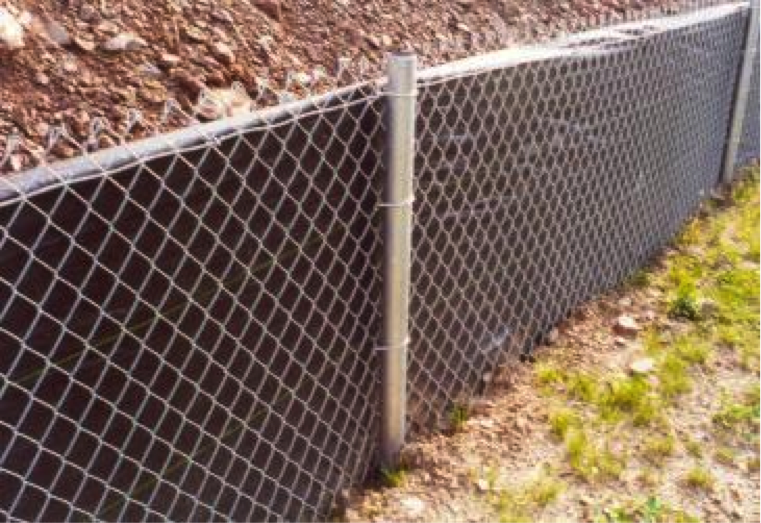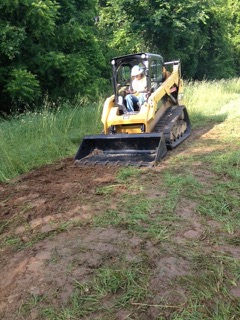Erosion Control Device Installation
Erosion Control Devices (ECDs) help prevent erosion in several ways. They can be a direct replacement for straw or hay mulch and provide uniform protection from raindrop erosion, moderating temperature and moisture extremes and preventing detachment of the soil by sheet flow. They can hold seed and mulch in place on slopes and in channels so that vegetation can become established. And they can be used to permanently reinforce turf to protect channels and stream banks in high flows conditions.
Silt Fence:
Silt fence used to control runoff from small disturbed areas when it is in the form of sheet flow, and the discharge is to a stable area.

Super Silt Fence:
Super silt fence used to control runoff from some small disturbed areas where the maximum slope lengths for reinforced silt fence cannot be met and sufficient room for construction of sediment trap or basins does not exist. Super silt fence should not be used in areas where rock or rocky soils prevent the full and uniform anchoring of the fence or proper installation of the fence posts.

Wattles:
Wattles are erosion and sediment control barriers consisting of straw or other organic materials wrapped in biodegradable tubular plastic or similar encasing material. Sometimes called Fiber Rolls. Wattles may reduce the velocity and theoretically spread the flow of rill and sheet runoff, and can capture and retain sediment.
Straw Bale Barriers:
Straw bale barriers may be used to control runoff from small disturbed areas provided that runoff is in the form of sheet flow. Since straw bales tend to deteriorate within a 3-month period, they should be considered as short-term control measures.
Wood Chip Berms:
Wood chip berms used on wooded or rocky slopes where staking and trenching of other. Since they do not require trenching, wood chip filter berms disturb less soil during installation than silt fence or straw bale barriers.
Wood Chip Berms:
Vegetative filter strip consists of a well-vegetated, grassy area below a disturbed area that can be used to remove sediment from runoff prior to its reaching surface waters.
Surface Roughening:
Surface roughening means providing a rough soil surface with horizontal depressions created by operating a tillage or other suitable implement on the contour, or by leaving slopes in a roughened condition by not fine-grading them. This will aid in establishment of vegetative cover with seed, reduce runoff velocity, and increase infilatration, and reduce erosion and provide for sediment tapping. Surface roughening is also a way to prepare the seedbed.

Temporary Safety Fence:
A protective barrier installed to prevent access to an erosion control measure. For example: Orange safety fencing is the perfect way to contain materials, protect locations and keep a high level of visibility around areas with large amounts of debris. Widely used for safety, containment and control, these barriers are a great solution for any area where high visibility is required.






